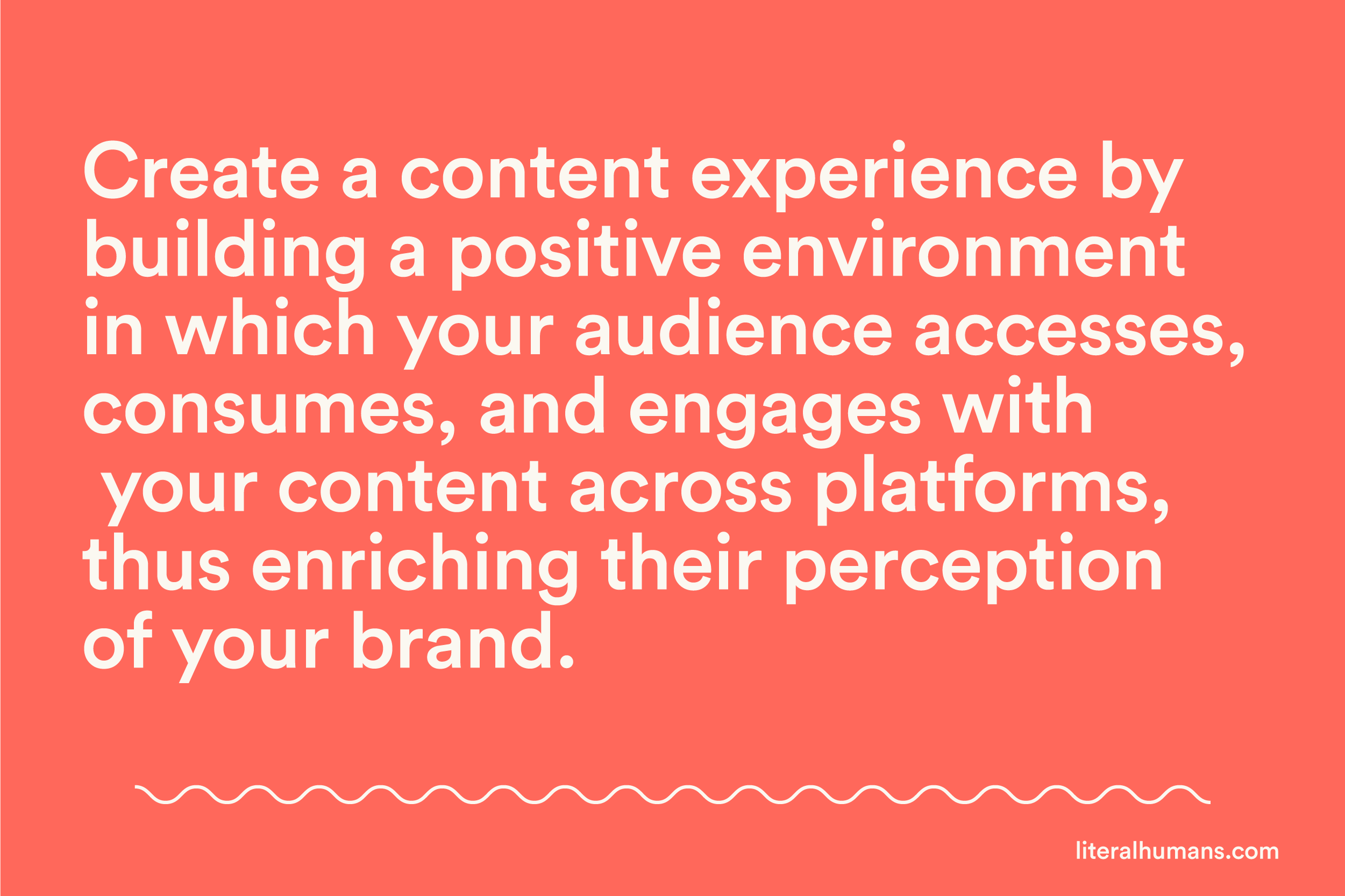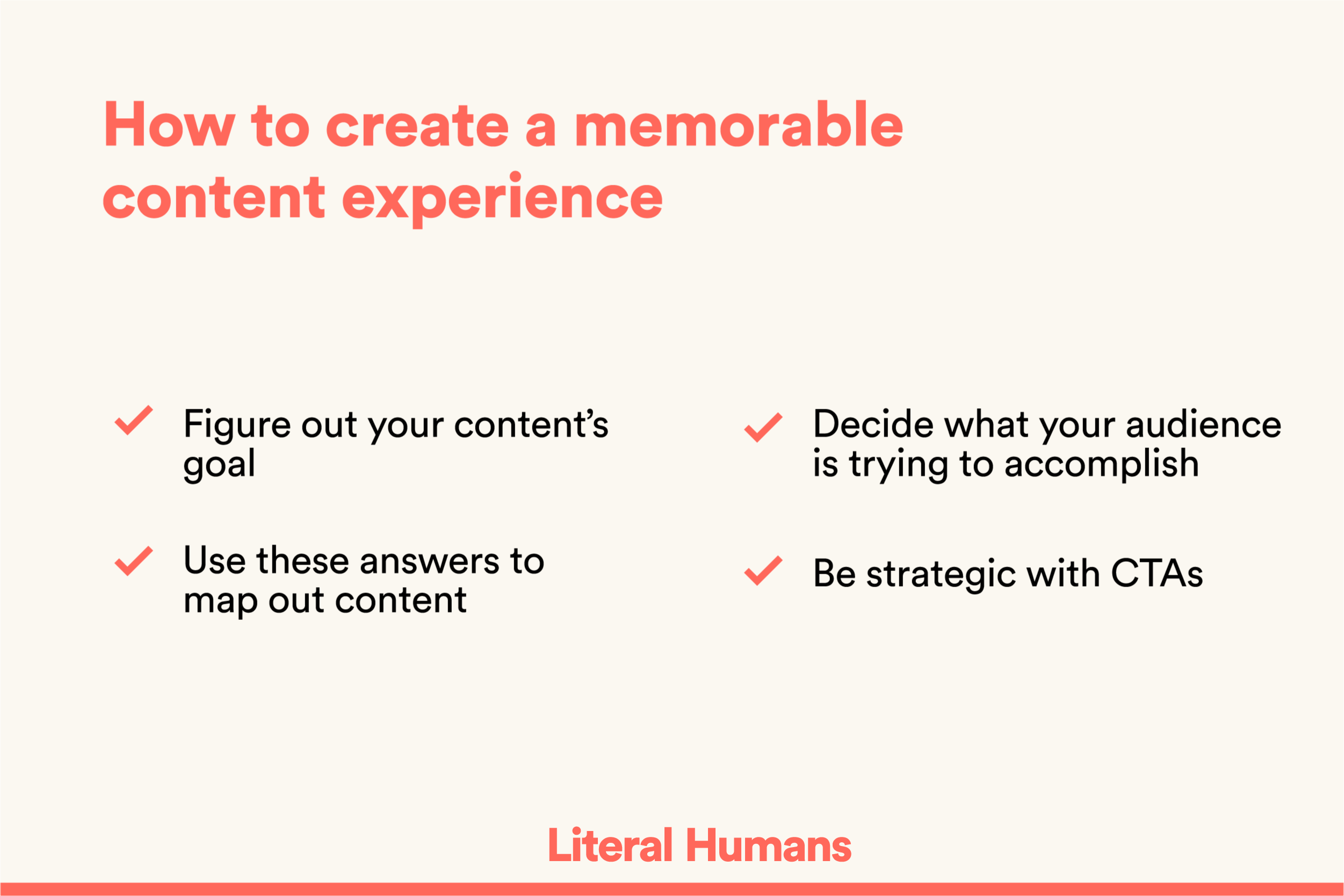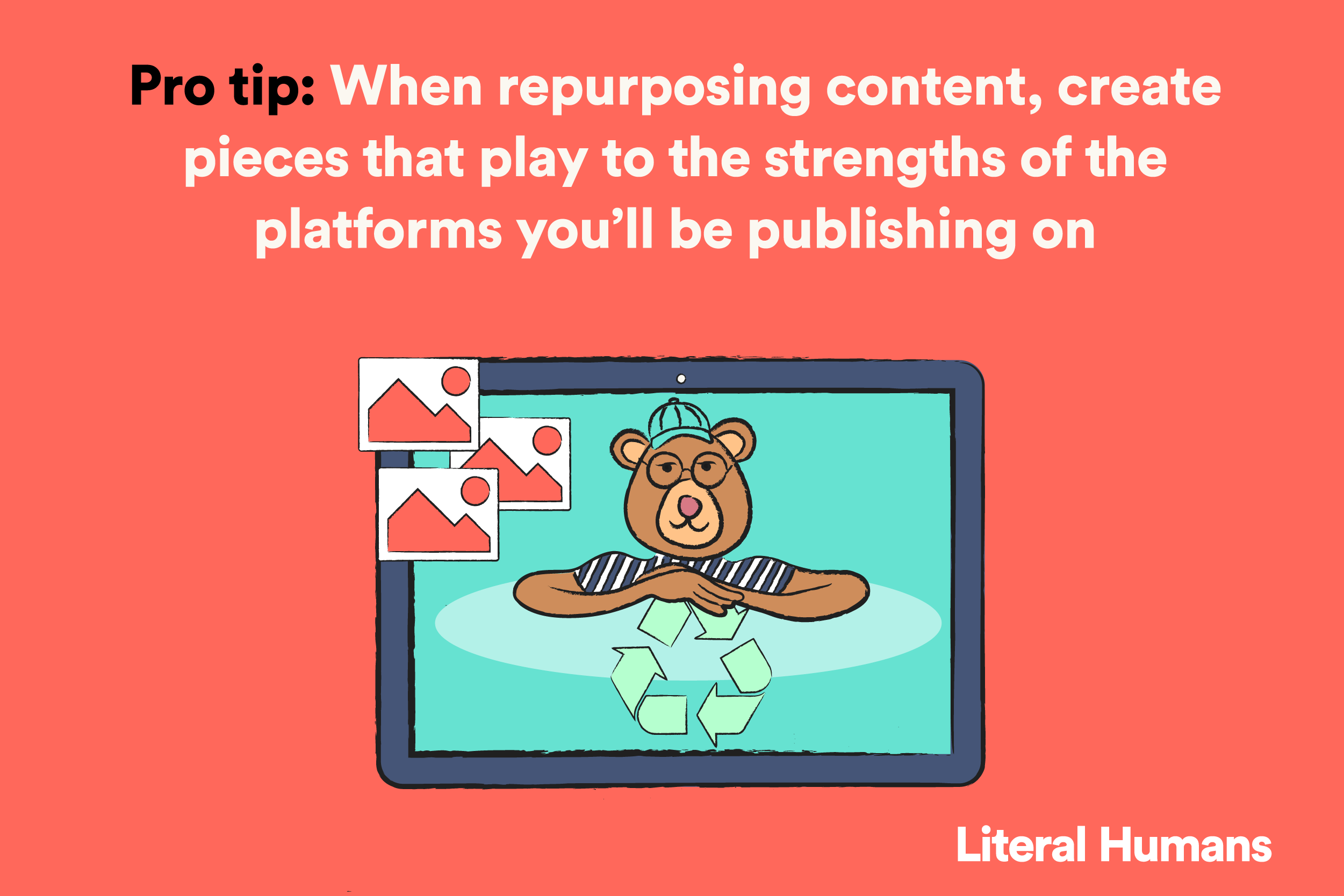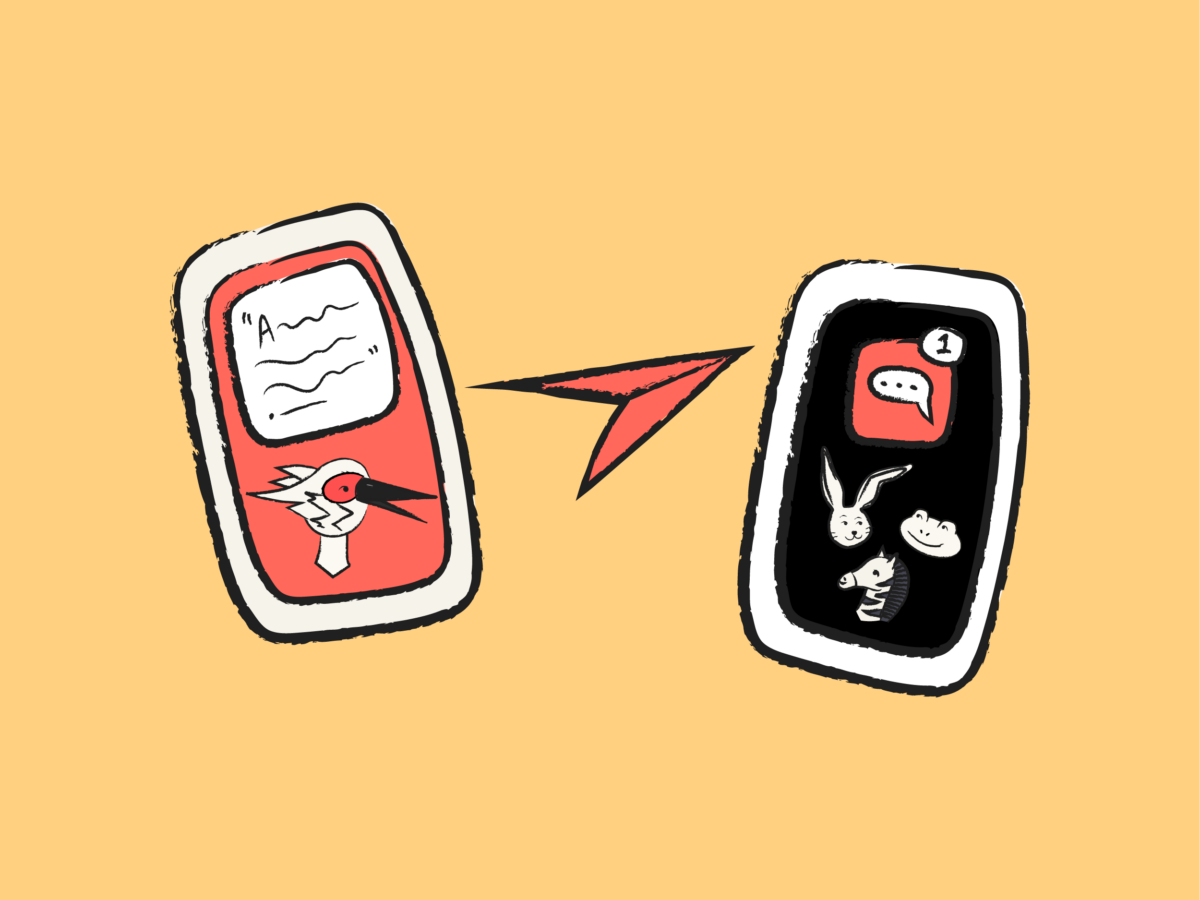Let’s do a quick exercise. Come on, close your eyes for a few seconds…
I want you to think about your favorite vacation spot.
Where is it? What are your favorite activities? What do you like most about it? And most importantly, how do you feel when you’re there?
Really think… What makes that spot so special over the millions of other places you’ve visited?
Is it how the people treat you? The overall experience when you’re there? Or the fact that it’s personalized just to your liking? (Maybe it’s a combination of everything.)
Now open your eyes.
That rush of emotions you just got?
That, my friends, is the power of experience, an experience that’s left such an impression on you that even months afterwards, you’re still moved.
And those feelings, my friends, are what we’re here to help you mimic… using content.
Make your brand a memorable one with content experiences. We’re here to show you how.
What is a content experience?
To understand what a content experience is, let’s start with the second word in the phrase: experience.
According to Cambridge dictionary, an experience is defined as the process of getting knowledge or skills from doing, seeing, or feeling things.
In other words, experiences come from living.
Slap content to the beginning of that, and the phrase defines itself.
Content experiences are how your audience experiences content. You create a content environment in which they access, consume, and engage with it across platforms, thus enriching their perception of your brand.

How is a content experience different from content marketing?
Yes, content experiences sound eerily similar to content marketing. After all, both address the content needs of customers, from prospects to loyal brand advocates.
But there is one clear distinction between the two: the approach.
Content marketing envelopes content strategy, creation, distribution, and promotion. You create content that delights, entertains, and educates your audience at the right time and the right place so they feel supported and heard throughout their buyer’s journey.
(Think of the separate parts to content marketing like chair legs. Without one leg, the chair is unstable. Without two or more legs, the chair is no longer functional.)
Whereas, the content experience is all about presentation.
With content experiences, content is more than just assets to be strategized, created, distributed, and promoted. The overall experience and how content is presented leaves the audience with an impression of your brand.
Why is creating a content experience important?
People are getting sick of cookie-cooker, shallow SERPs from Google. (And if you spend any time on LinkedIn, you know I’m not alone in saying this. Exhibit A below.)
People want to feel seen. People want to be heard. People want to be understood.
And the best way to make sure they’re taken care of is by creating content geared towards them and their specific needs at this point in their life. But not only highly personalized content, content that logically flows from one piece to another, effortlessly progressing the reader along in their journey.
But aside from this, content experiences are important for many other reasons. Here are a few of the strongest:
- You’ll stand out from the crowd. The more your content looks and feels like everyone else’s, the more you’re contributing to the digital noise, not distinguishing yourself from it. Content experiences leave an impression on the minds of your audience.
- You’ll humanize your brand. Part of building a strong content experience is empathizing with your audience. This also happens to be a powerful way to humanize your brand.
- You’ll increase your bottom line. We’re all in business to make money. Like it or not. And it’s a tale as old as time that people do business with those they like. Leverage content experiences to move the needle.
Simply put, creating a content experience is the best way to propel your business forward for years to come.
How to create a memorable content experience

Content Marketer Christine McLean’s interview with Ashley Faus, content strategy lead of software teams at Atlassian, is one of the most straightforward conversations I’ve heard about creating a memorable content experience.
For those who want the cliffnotes, here’s what was shared:
- Figure out what the goal of your content is. Is it to educate? Sell? Build relationships? Gain followers? No one goal is more important than the next as long as you can justify it within the grand scheme of things — a.k.a. It increases your bottom line in some way, shape, or form.
- Figure out what your audience’s goals are. What is your audience trying to achieve when they come to specific channels? For example, does your audience like to learn when they come to YouTube? Or would they rather be sold to? What about your LinkedIn? What sort of posts perform well there? Your audience has different goals depending on the platform. Have no clue what your audience’s goals are? Ask them. Conduct customer interviews to determine their needs, wants, and general pain points.
- Use these answers to map out your content. Once you know content and audience goals, marry that information. Think about what each piece of content is trying to do and how you can meet your audience where they’re at to satisfy their content needs. This will help you create a well-rounded content experience that doesn’t fall short. Let’s bring this point home with an example. Imagine your content goal is to educate your audience on the latest trends in content marketing. You know that your audience frequents LinkedIn to learn, not to be sold to. You also know that short videos receive a lot of engagement and views — meaning you’ll also be able to increase brand awareness. Based on all this information, you could create explainer videos to publish on LinkedIn. Flirt with the length and style of each video until you find something that sticks with your audience and gets you the results you want.
- Pro tip: Be smart with CTAs. When you’re creating content on social media, it’s easy to get carried away with calls-to-action (CTAs) — think: like, comment, subscribe, go to my website, etc. Having various CTAs not only gives mixed messages to your audience, it also ruins your optimizations. Think about it. If you want to measure click-through rates (CTRs) to your website, why are you also telling viewers to like the video and subscribe to your channel? Or vice versa? With all content pieces, choose one specific CTA. This will not only help you understand what you’re optimizing for to better measure your results, but also make things clearer for the audience. People will know what’s expected of them after they finish.
3 extra tips for delivering a better content experience
Use these final tips to ensure you’re delivering an engaging content experience across all digital platforms:
- Optimize your website. Your website is your hardest-working salesperson. So, why not treat it as such? Improving the user experience on your website will not only help you convert cold traffic into customers, but also strengthen your brand’s overall image. From optimizing for mobile usage to checking site speed and improving navigation, here are some website optimization strategies you need to stay competitive.
- Repurpose content according to the strengths of each platform. To provide the best content experience, execute a strategy that plays to the strengths of each platform you publish on. Repurpose long-form content into bite-sized content pieces that can be shared across social channels. For example, one long-form blog can be separated into five tweets, three LinkedIn SlideShares, and 5 Facebook (sorry, Meta) posts. Or one podcast can be transcribed into a blog post, and then made into shorter video chips that are distributed across social channels as well. There’s no one right way to repurpose content as long as you’re 1. doing it, and 2. playing to the strengths of each platform simultaneously.
- …And cross-link wisely while you’re at it. In the same light, be smart with your linking opportunities. For instance, imagine you’re posting a snippet from a recent blog post on LinkedIn.

Well, posts with external links often don’t get pushed up in the algorithm on LinkedIn. (Like other social channels, LinkedIn wants you to spend as much time with them as possible. Why would they encourage you to leave?)
To get around this, post the link to the blog in the comments section. Then, direct people in the CTA to click on the link in the comments below to see the full piece.
Take this post from my own LinkedIn account to see what I mean.
You’ll notice a single CTA: comment and let me know what you think is the difference between content marketing vs content writing.
And in the comment section, readers can click on the link to the full blog post. (It’s not a CTA, just there for further resources. And because it’s in the comments section, that doesn’t interfere with the algorithm.)
Just know that engaging content experiences are all about the audience
At the end of the day, creating the best content experience is all about personalizing content efforts to meet your audience where they’re at and satisfy their current needs.
Do it right, and you’ll be well on your way to branding yourself as the only solution.
Remember: While presentation is key, personalization will leave a lasting impression.
So, try prioritizing people at the center of your content. Align their expectations with yours. And if you want some help, we’re here for you. Schedule a call to see how we can help you strengthen your brand with strategic, engaging content experiences.









